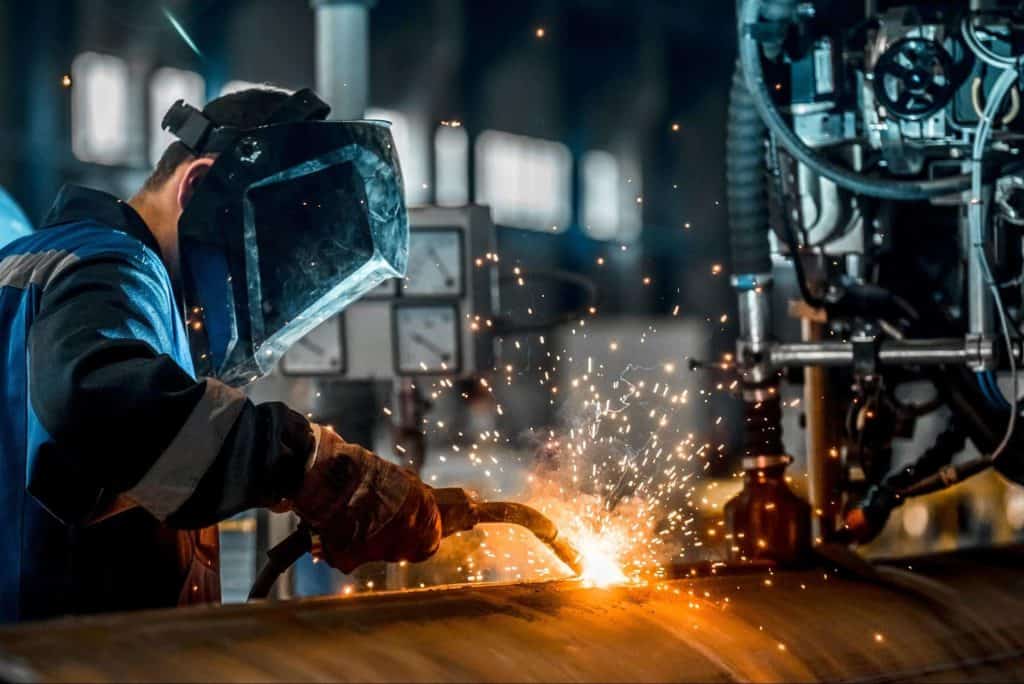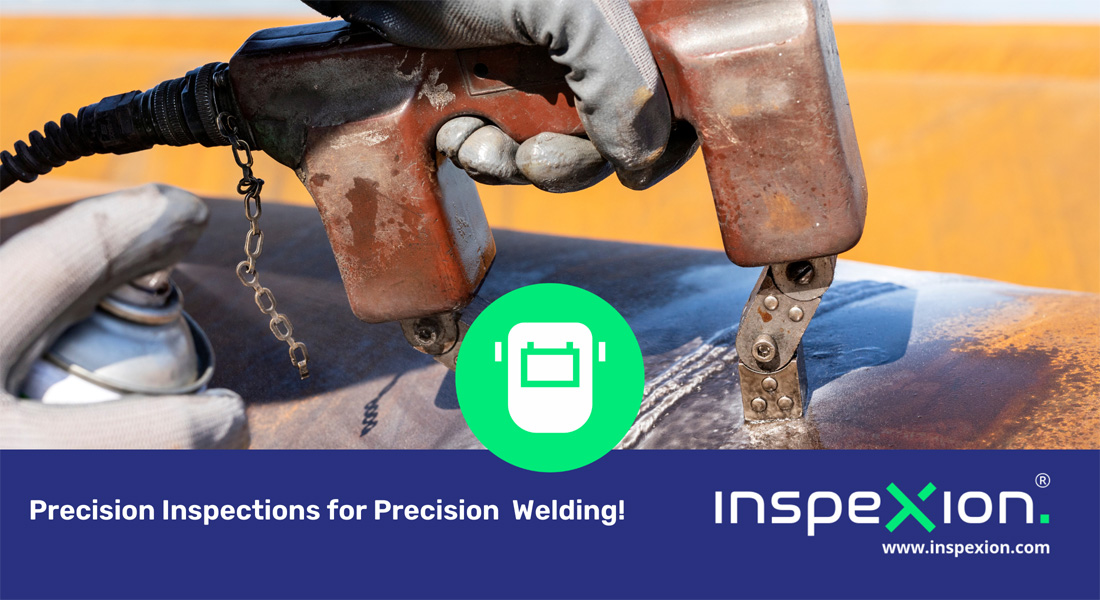How Welding Inspection Milwaukee Can Conserve You Cash over time
How Welding Inspection Milwaukee Can Conserve You Cash over time
Blog Article
Understanding the Value of Welding Examination in Ensuring Structural Stability and Safety Throughout Different Industries
Welding inspection is an important procedure that safeguards structural stability and safety across varied industries. By meticulously evaluating weld quality, inspectors assist prevent problems that can lead to tragic failures. This systematic evaluation not only reinforces conformity with market requirements yet additionally plays a pivotal duty in maintaining properties and ensuring public safety. The ramifications of overlooking correct evaluation practices are extensive, commonly resulting in significant financial and human expenses. As we explore the ins and outs of welding examination, the inquiry emerges: what are one of the most vital variables that add to efficient assessment procedures?
Duty of Welding Examination
While the integrity of bonded frameworks is vital to safety and security and performance, the duty of welding examination can not be overstated. Welding examination acts as an important quality assurance procedure that makes certain the adherence to developed requirements and requirements throughout the welding procedure. By methodically assessing welds for defects, disparities, and non-compliance, examiners play an essential role in safeguarding the honesty of structures across numerous markets.
Welding evaluations incorporate a range of activities, from pre-weld evaluations to post-weld analyses. These analyses not only determine possible problems before they rise yet also enhance the total integrity and life-span of welded parts. Welding Inspection Milwaukee. Evaluations assist to validate the skill and expertises of welders, ensuring that welding treatments are executed properly and materials work
In addition, an extensive inspection method cultivates compliance with regulative needs and industry criteria, lessening the risk of disastrous failings. By advertising a culture of safety and security and responsibility, welding examination adds considerably to both operational and financial effectiveness. In sum, the duty of welding assessment is vital, as it underpins the top quality, security, and longevity of welded frameworks vital to modern framework and industry.
Kinds Of Welding Inspections
Understanding the various kinds of welding assessments is vital for keeping the top quality and safety of welded structures. Welding assessments can be categorized into numerous kinds, each serving a details purpose in the evaluation process.
Aesthetic inspection is the most fundamental kind, including a careful assessment of the welds with the nude eye or through zoom. This method aids recognize surface issues such as splits, incomplete combination, or excessive spatter.
These techniques enable assessors to assess the stability of welds without endangering the product's structure. Ultrasonic screening uses high-frequency sound waves to find internal imperfections, while radiographic testing employs X-rays or gamma rays to visualize inner weld characteristics.
Harmful screening, though less common, involves physically examining samples to understand the weld's mechanical properties. Each kind of assessment contributes to a detailed analysis, making certain that welding fulfills sector standards and safety and security needs.
Industry Specifications and Regulations
Establishing sector criteria and laws is vital for making certain the safety and security and dependability of bonded frameworks. These criteria work as standards for safety, top quality, and efficiency, guiding manufacturers and assessors in the execution of welding procedures. Different companies, such as the American Welding Society (AWS) and the International Company for Standardization (ISO), have created extensive requirements that dictate procedures for welding practices, credentials of welders, and assessment strategies.
Compliance with these policies not just enhances the top quality of welds yet likewise minimizes risks connected with structural failings. Specific codes, such as the ASME Central Heating Boiler and Stress Vessel Code, summary requirements for the construction of stress vessels, guaranteeing they can hold up against operational stresses. In addition, national and neighborhood laws commonly mandate adherence to these industry criteria, strengthening their significance throughout sectors like building, aerospace, and automotive production.
Normal updates to these requirements reflect innovations in innovation and welding techniques, guaranteeing that precaution stay relevant. Thus, a detailed understanding and execution of these criteria is crucial for welding experts, cultivating a society of safety and quality in welded structures.
Repercussions of Poor Inspections
Inadequate inspections can lead to serious consequences in the welding sector, threatening the really requirements and policies created to ensure safety Visit Website and security and structural integrity. The repercussions of inadequate examinations can manifest in numerous forms, from prompt safety hazards to long-term structural failures. One of one of the most disconcerting end results is the capacity for catastrophic mishaps, which can result in significant injury or death. In markets such as production, aerospace, and building and construction, the implications of subpar welding can endanger whole structures or elements, leading to costly repair services and comprehensive downtime (Welding Inspection Milwaukee).
Furthermore, inadequate evaluations can stain a business's online reputation and outcome in lawful consequences, including fines and lawsuits. Inevitably, the ramifications of bad evaluations extend beyond private tasks, affecting industry-wide requirements and public understanding, thus emphasizing the essential requirement for effective and extensive welding inspections.
Ideal Practices for Effective Examinations
Reliable welding inspections are paramount to ensuring the stability and safety and security of welded structures. To achieve ideal results, examiners must abide by numerous best techniques that boost the evaluation process.

Secondly, assessors need to possess the needed certifications and qualifications appropriate to the welding procedures and products being analyzed. Ongoing training and expert development are critical to remaining upgraded on market standards and technical advancements.
Furthermore, utilizing proper examination devices and techniques, such as visual evaluations, ultrasonic testing, and radiographic evaluations, is vital for spotting problems that might jeopardize structural stability.
Lastly, thorough paperwork of the inspection procedure is necessary. By applying these best techniques, organizations can significantly enhance the performance of their welding examinations and ensure safe, reliable procedures.
Conclusion

In final thought, welding assessment is necessary for keeping architectural honesty and safety and security across various industries. Prioritizing effective welding examinations is crucial to make certain the safety of personnel, assets, and general functional stability.

As we check out the complexities of welding assessment, the inquiry arises: what are the most essential factors that contribute to effective examination Resources processes?
Welding inspection serves as a crucial top quality control procedure that makes certain the adherence to developed standards and specs throughout the welding procedure. In amount, see this page the role of welding examination is crucial, as it underpins the quality, safety, and long life of welded frameworks crucial to contemporary framework and sector.
Various companies, such as the American Welding Society (AWS) and the International Company for Standardization (ISO), have established comprehensive standards that dictate treatments for welding practices, credentials of welders, and inspection strategies.
Inevitably, the implications of inadequate inspections extend beyond individual tasks, influencing industry-wide criteria and public assumption, thus stressing the vital requirement for strenuous and reliable welding inspections.
Report this page